TRAC Monthly Report: February 2025
- Category: Monthly Reports
- Author: JM
- Published: 03 Mar 2025
- Last updated: 06 Mar 2025
Winter Night Sky
The View From Rainham
Only the brightest stars are visible from Rainham due to the light pollution. Luckily, it's still possible for us to see the planets and all of the main constellations.
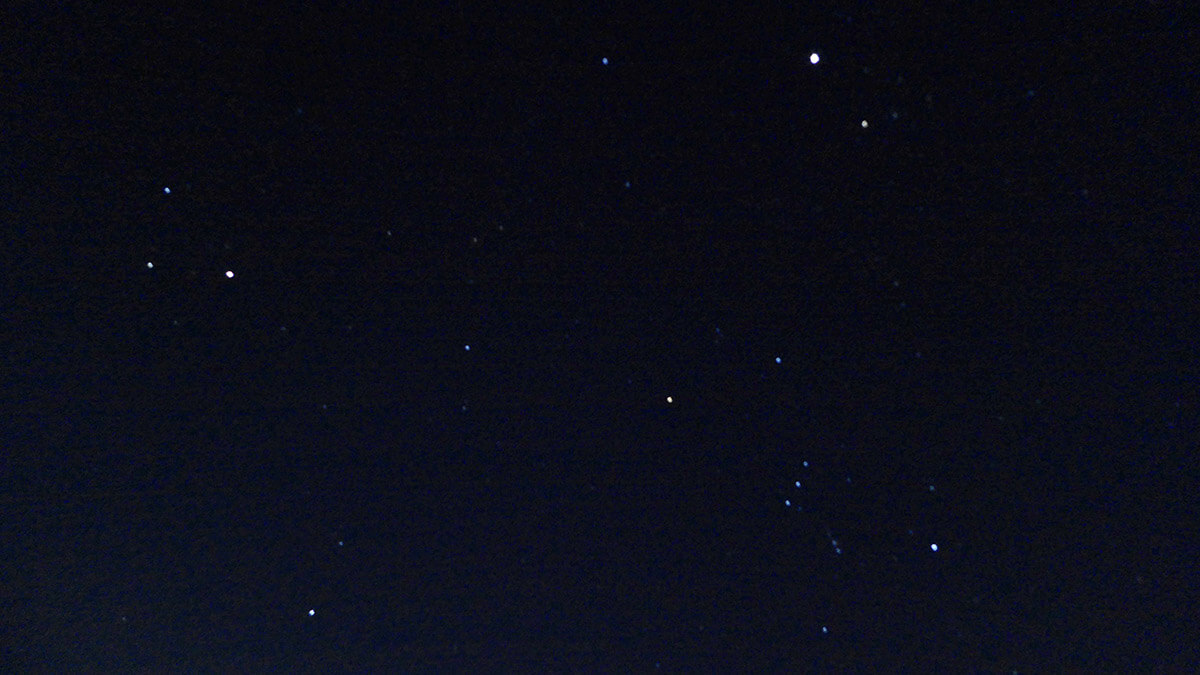
Image credit: JM/TRAC
Above image: Castor, Pollux, Mars, Sirius, Jupiter, Albaran, and Betelguese and Rigel in Orion are easy to see from Rainham. Anything fainter than magnitude +5 requires binoculars.
The View From France
A few hundred miles south, the view doesn't change much.
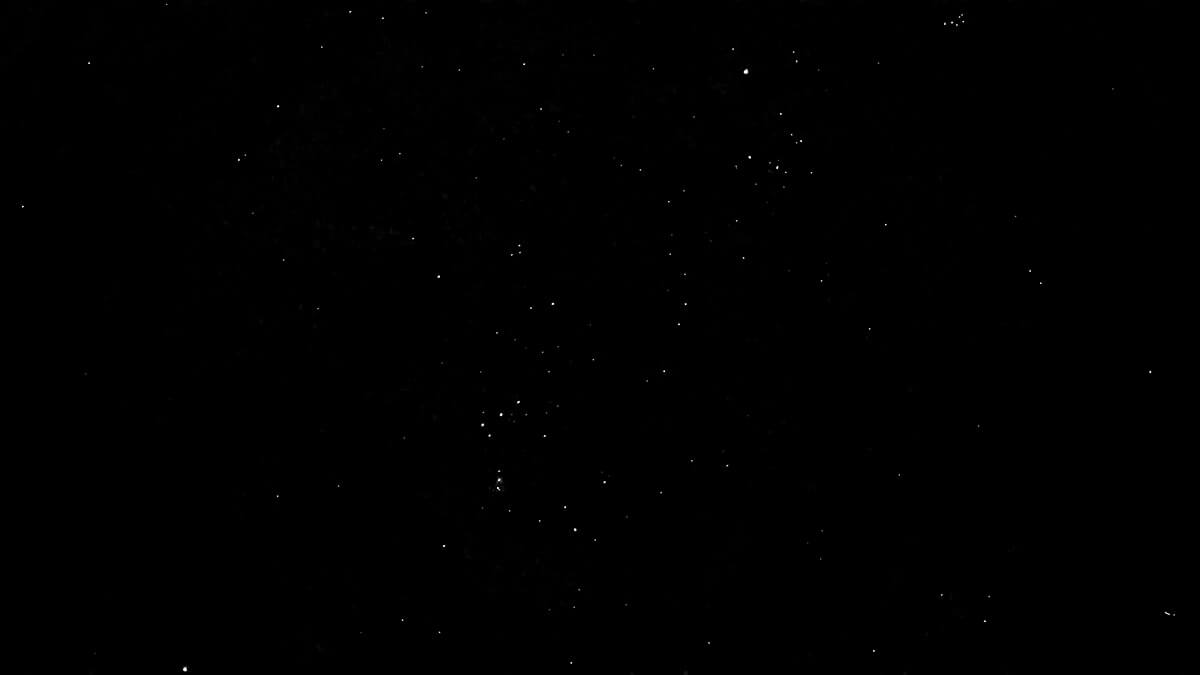
Image credit: MK/TRAC
Above image: The February night sky as seen from a busy motorway on the outskirts of Reims, France.
The View From Austria
Two TRAC team members headed to the Austrian Alps in mid-February. During their stay, they managed to take some incredible photos of the night sky from their location high up in the mountains.
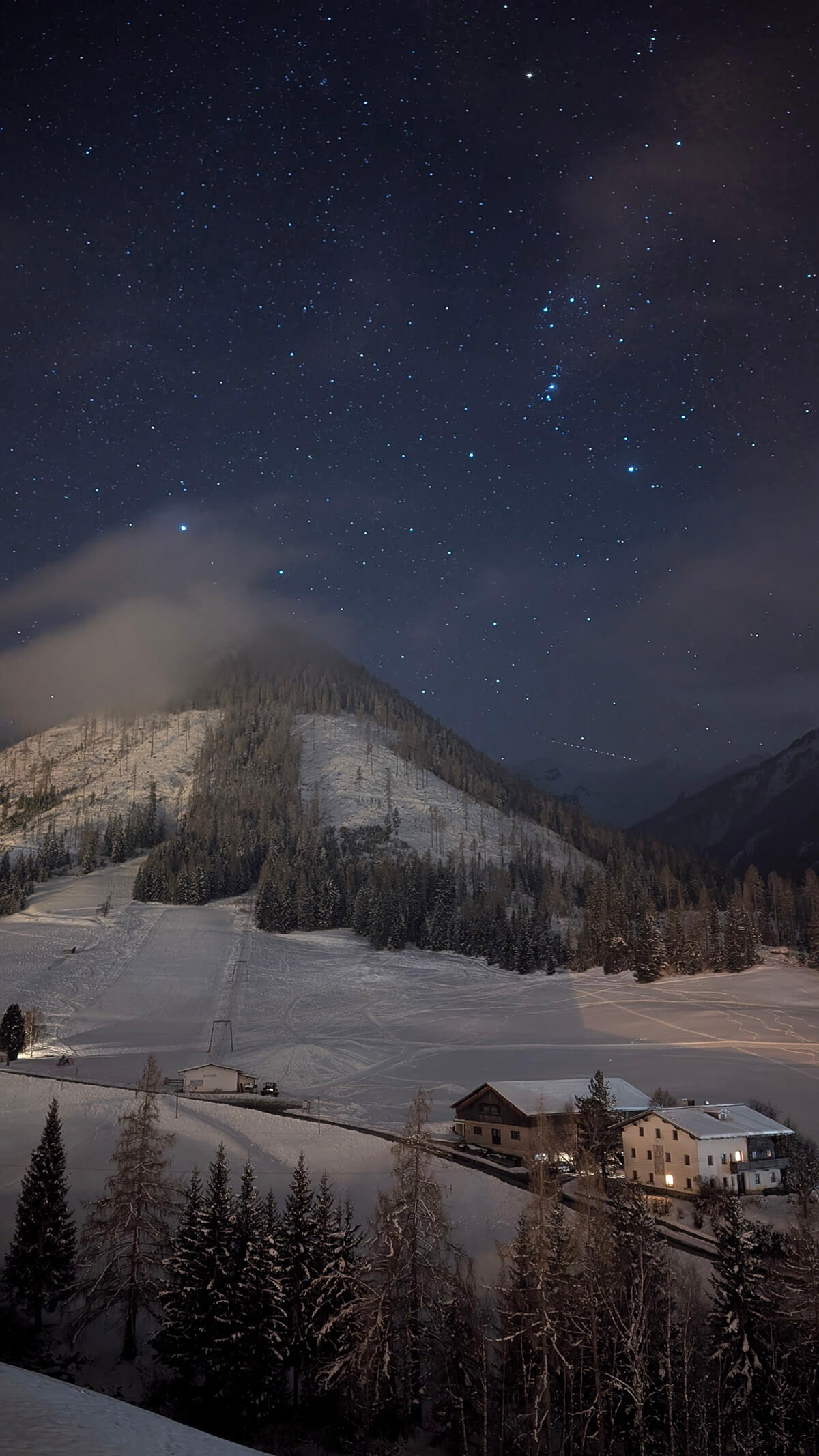
Image credit: KK/TRAC
Above image: Orion is seen surrounded by thousands of stars in this photo taken at 20:35 on 16 Feb 2025. The camera was even able to pick out the large gas cloud that makes up the Orion Nebula.
More photos taken from Austria are featured in this report.
Winter Constellations
We got excellent views of our favourite winter constellations, Orion and Taurus.
TRAC members visiting Austria took the below time-lapse videos, which illustrate how far the stars move in a four-minute period. The four-minute recordings have been sped up by a factor of 240.
Video credit: KK/TRAC
Video credit: MK/TRAC
Lunar Observations
Thin Crescent Moon
On 01 Feb 2025, we observed the crescent Moon on day 3 of the lunar cycle.
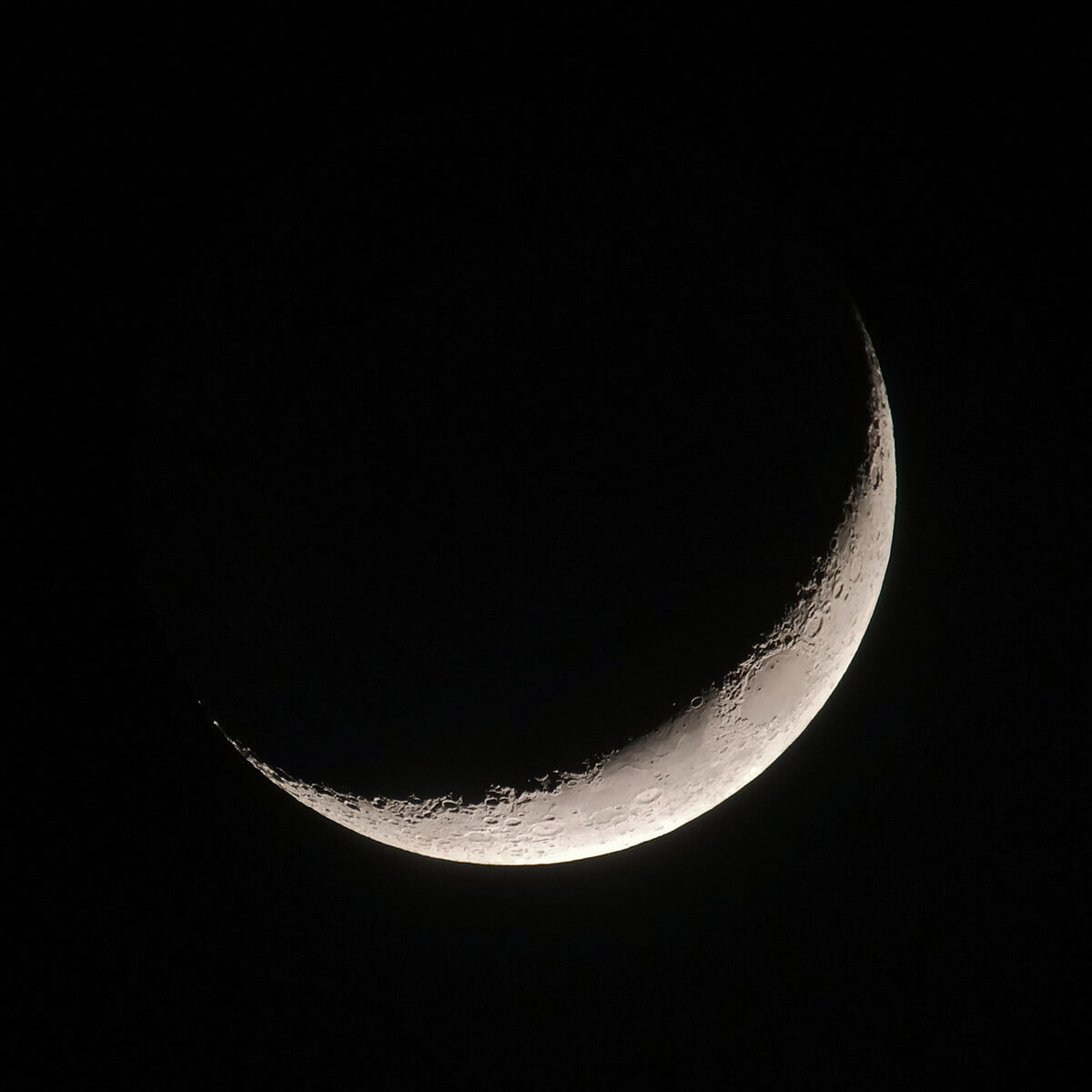
Image credit: MK/TRAC
Above image: Matey got this spectacular photo of the Moon, which shows a great amount of detail of the lunar eastern limb. Mare Crisium ("Sea of Crises") and Mare Fecunditatis ("Sea of Fertility") are easily identifiable, along with major craters such as Cleomedes, Condorcet, Geminus, Bernouilli, Messala, Langrenus, and Petavius, plus many more!
While looking through the telescope at around 18:00, Matey saw two satellites move across the field of view. The first one went across the illuminated portion of the Moon, and the second one passed close by.
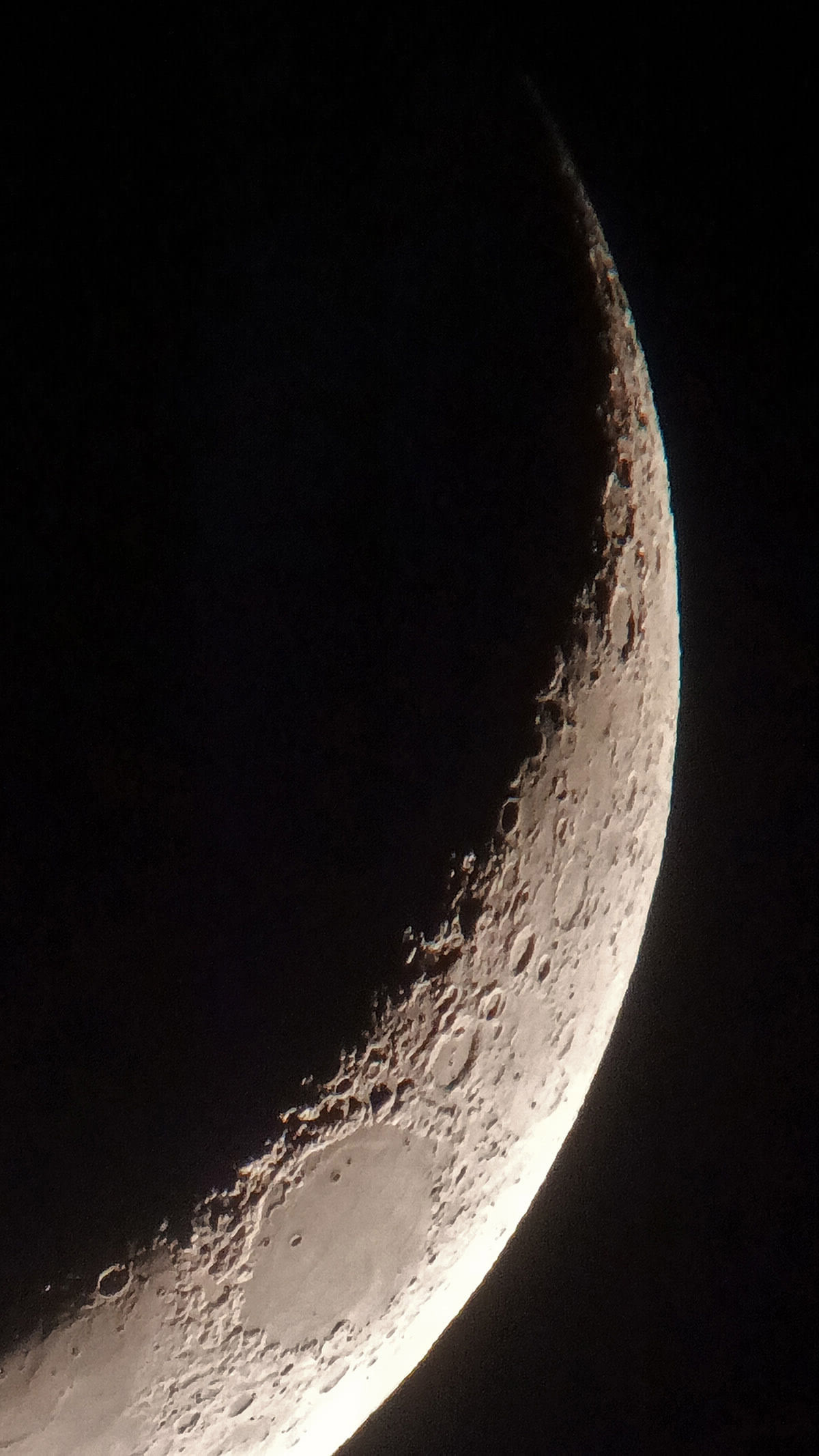
Image credit: MK/TRAC
Above image: A zoomed-in view of the Moon's eastern edge. The large craters surrounding Mare Crisium ("Sea of Crises") can be identified by consulting a good lunar atlas.
Moon–Venus–Saturn Conjunction (01 Feb 2025)
We saw this beautiful pairing from the park on the evening of 01 Feb 2025.
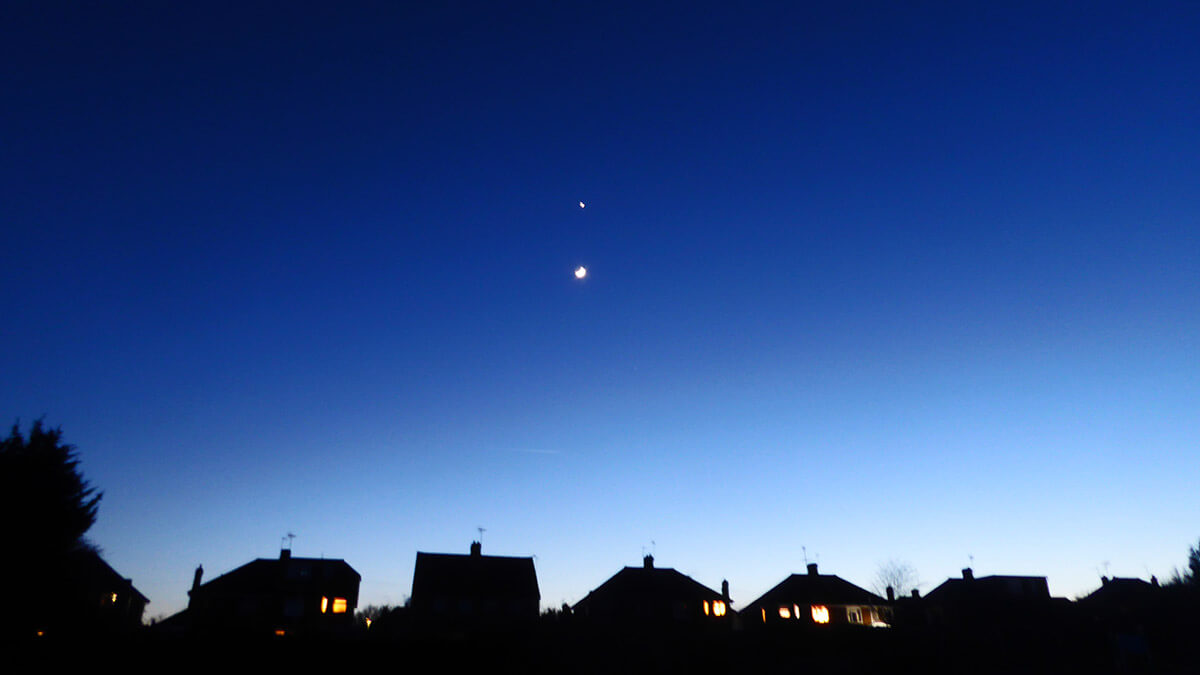
Image credit: JM/TRAC
Above image: Venus positioned above the crescent Moon at 17:30 on 01 Feb 2025 as seen from Ryetop Park in Rainham, Kent. This photo gives you an idea of how the conjunction appeared to the naked eye. It was featured in a BBC Weather article: Crescent Moon and Venus light up the night sky.
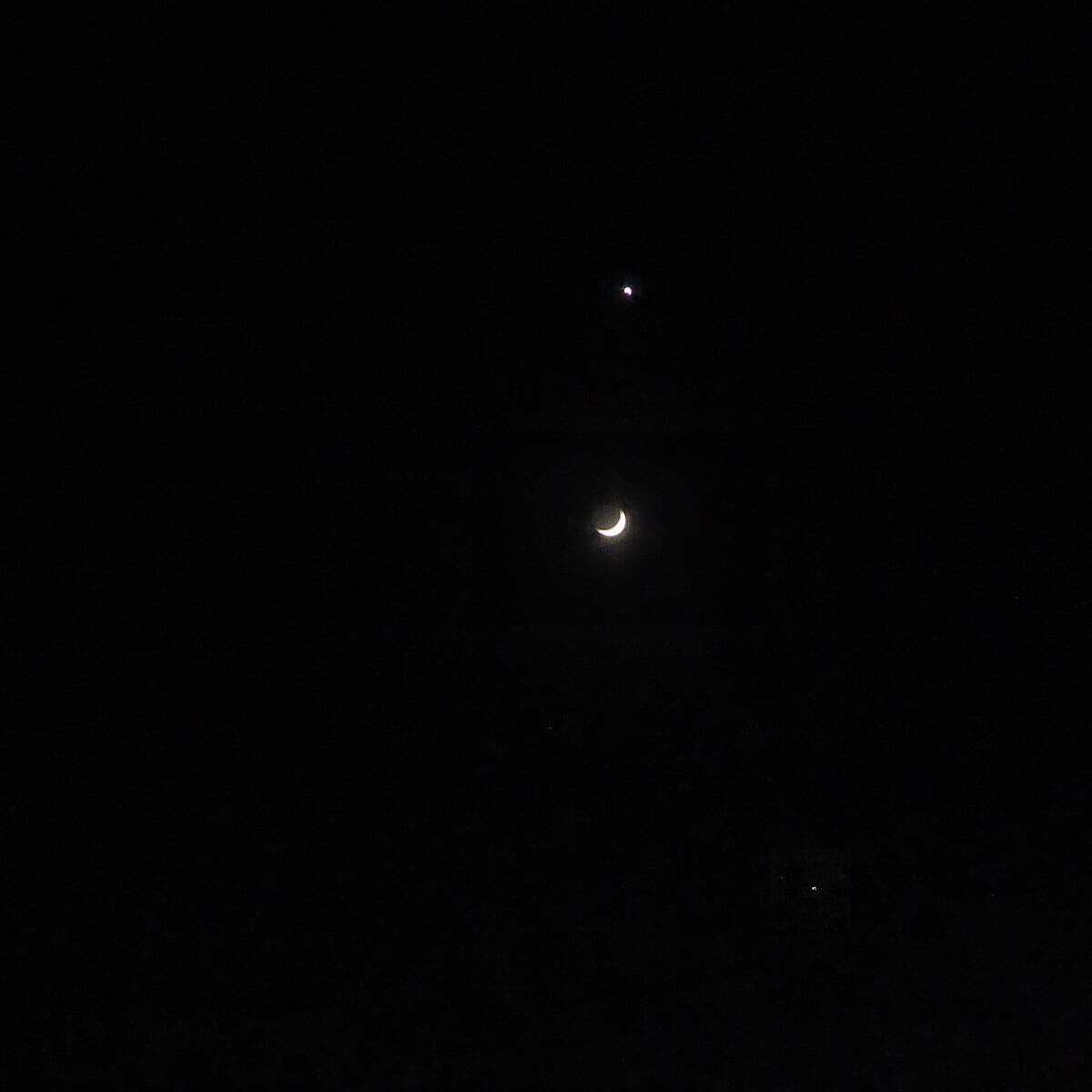
Image credit: JM/TRAC
Above image: Venus is positioned above the crescent Moon with Saturn to the lower right. Photo taken at 18:00 on 01 Feb 2025.
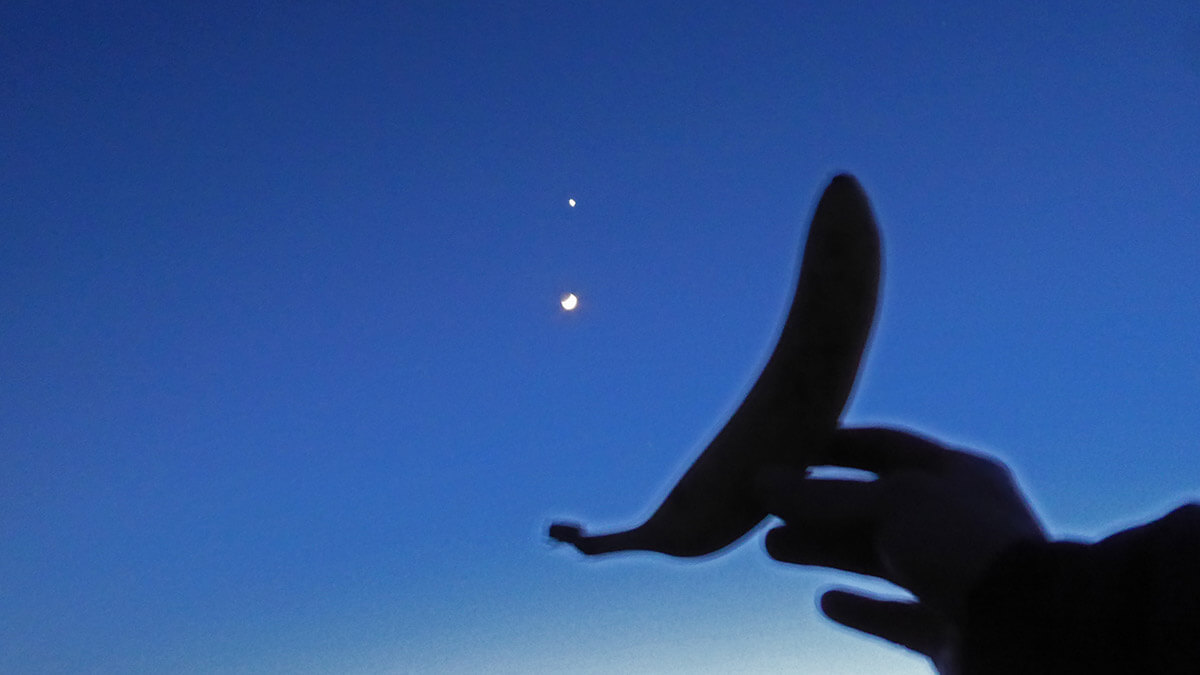
Image credit: KK/TRAC
Above image: Krum took this unique photo of a Venus-Moon-Banana conjunction on 01 Feb 2025. Never before in the history of astronomy has such an event been captured on camera!
Venus–Moon Conjunction (02 Feb 2025)
The Moon was once again close to Venus on the evening of 02 Feb 2025.
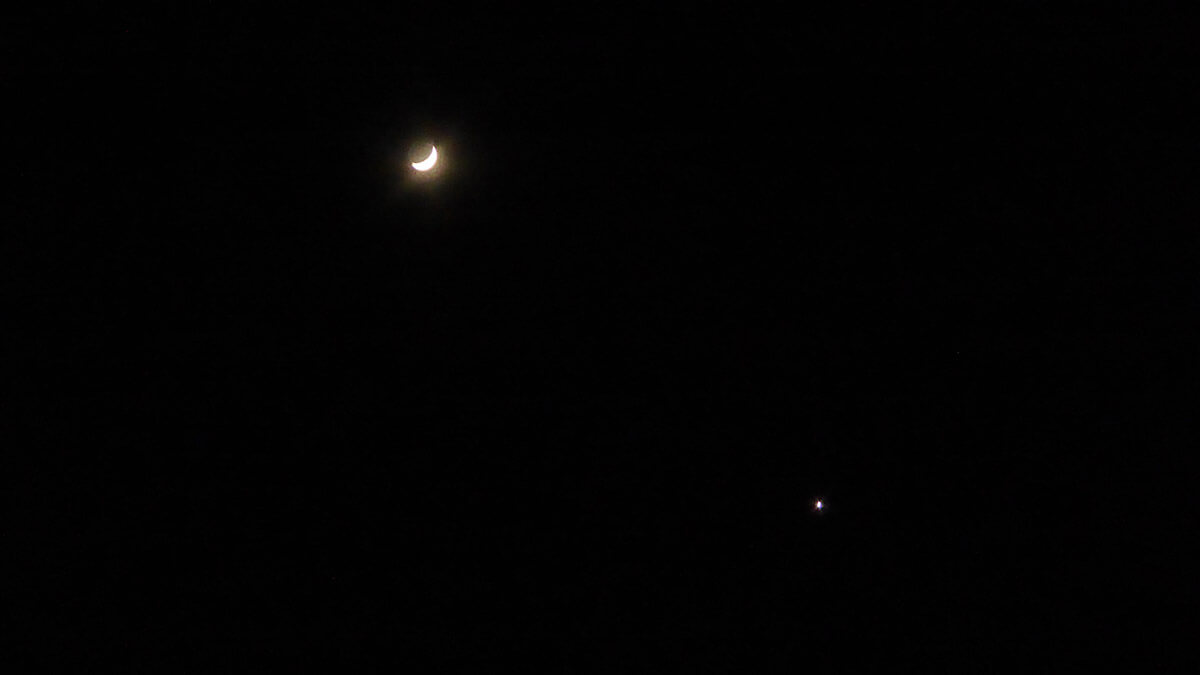
Image credit: JM/TRAC
Above image: Venus-Moon conjunction on 02 Feb 2025. Photo taken at 18:00 on 02 Feb 2025. Compare this image with the one taken the previous day to appreciate the angular distance the Moon moves in one day and how much the illuminated portion changes.
One-Day-Old Moon
The one-day-old Moon was not visible on 28 Feb 2025. We'll try again on 30 Mar 2025.
Open Star Clusters
The Hyades & The Pleiades
On countless evenings over the winter months, we've admired the two open star clusters in the constellation of Taurus.
They're the most recognisable star clusters because they can easily be seen with the unaided eye.
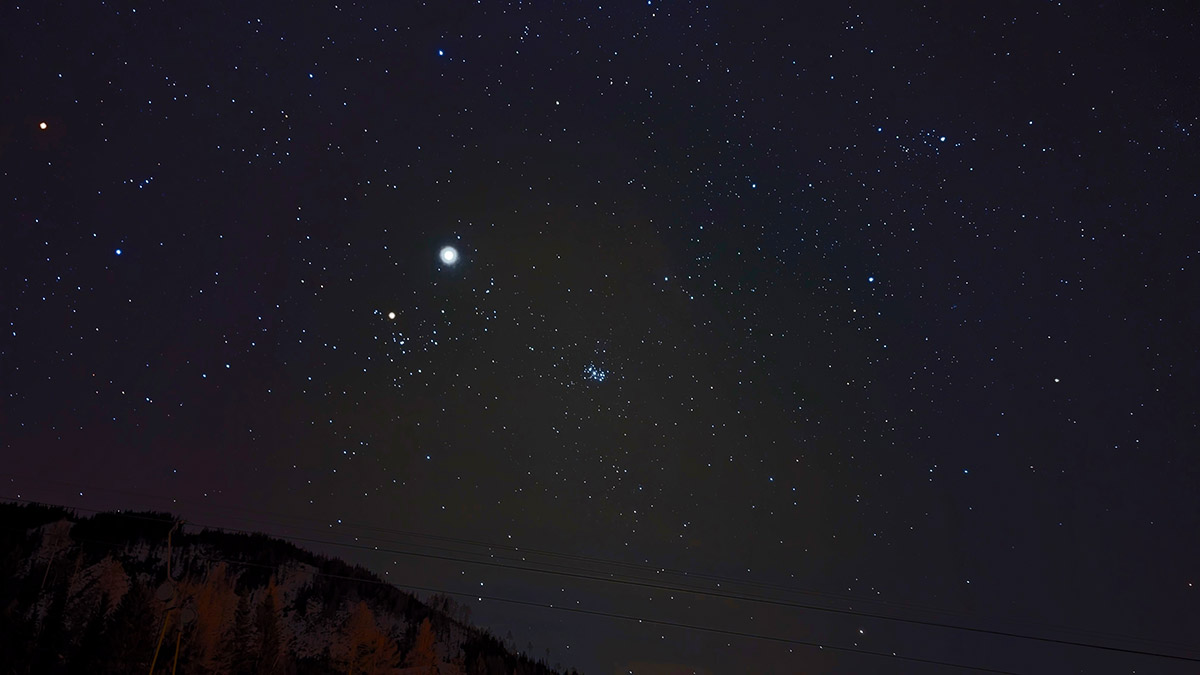
Image credit: MK/TRAC
Above image: Matey got a good view of these star clusters in this photo he took in Austria. The large bright object is the planet Jupiter. To its lower left is the bright orange star Aldebaran, which marks the top of the distinctive "V" shape of the Hyades. Further right is the iconic Pleiades star cluster with its seven blue stars.
The Beehive Cluster
This famous open cluster has been spotted from Rainham with binoculars. The trick is to start by finding Castor and Pollux and then panning down and left until you find the star cluster.
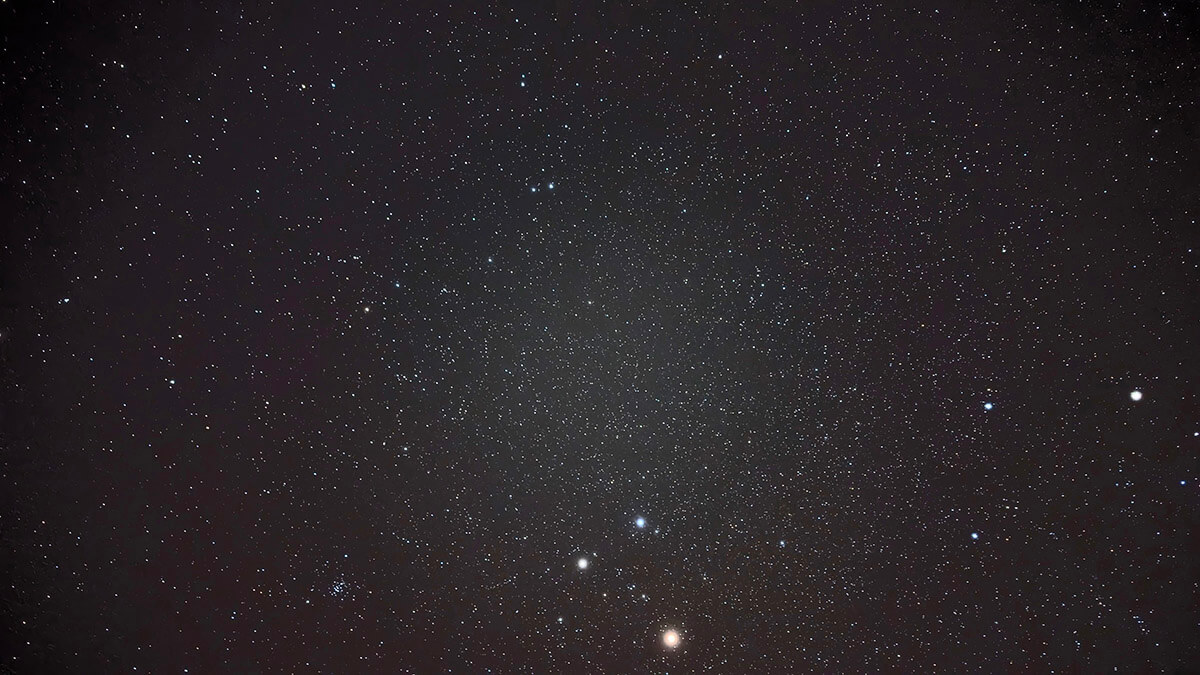
Image credit: MK/TRAC
Above image: The Beehive Cluster can be seen to the left of Castor and Pollux, the two bright stars near the bottom of the photo. The bright orange 'star' nearby is, in fact, the planet Mars.
Next time, we'll try to photograph all of these star clusters using the telescope and a focal reducer.
Solar Observations
Our First Look at the Sun
The solar filter was fitted to the telescope, and we took our first look at the Sun this year on 28 Feb 2025.
Looking at the Sun can be very dangerous. The safety procedures must be followed at all times.
Some adjustments were made and new ideas were put into practice:
- The filter screws were refitted (correctly this time!) and tightened.
- Electrical tape was used to secure the filter to the end of the scope.
- Certified eclipse shades were on hand.
- A UV umbrella was used to block unwanted sunlight while looking through the telescope eyepiece.
We enjoyed an excellent view of the Sun. Several smallish sunspots were visible as dark discs grouped together towards the Sun's south pole.
Next time, we'll have a go at taking some photos of the Sun. We'll also investigate attaching some of the solar film to a camera or a phone.
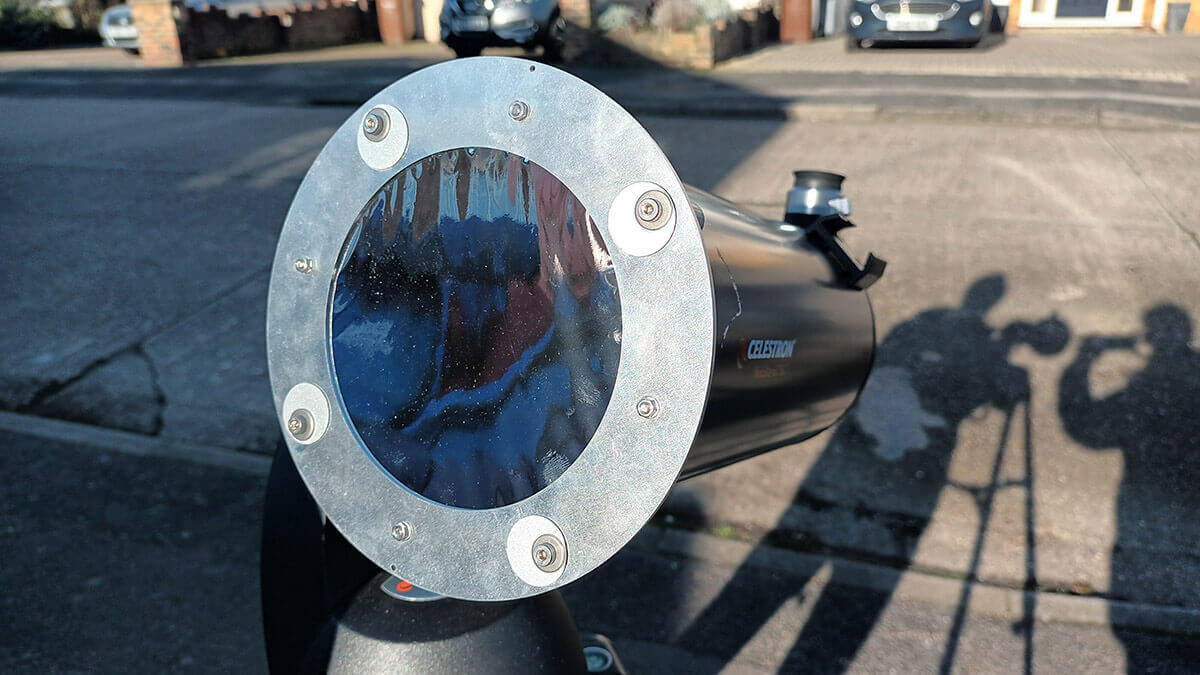
Image credit: JM/TRAC
Above image: The telescope is fitted with its solar filter and pointed at the Sun on a bright afternoon on the last day of the month.
Moon Shadow Transits
Ganymede Shadow Transit (25 Feb 2025)
25 Feb 2025: Ganymede's shadow was seen clearly transiting the gas giant at 19:30.
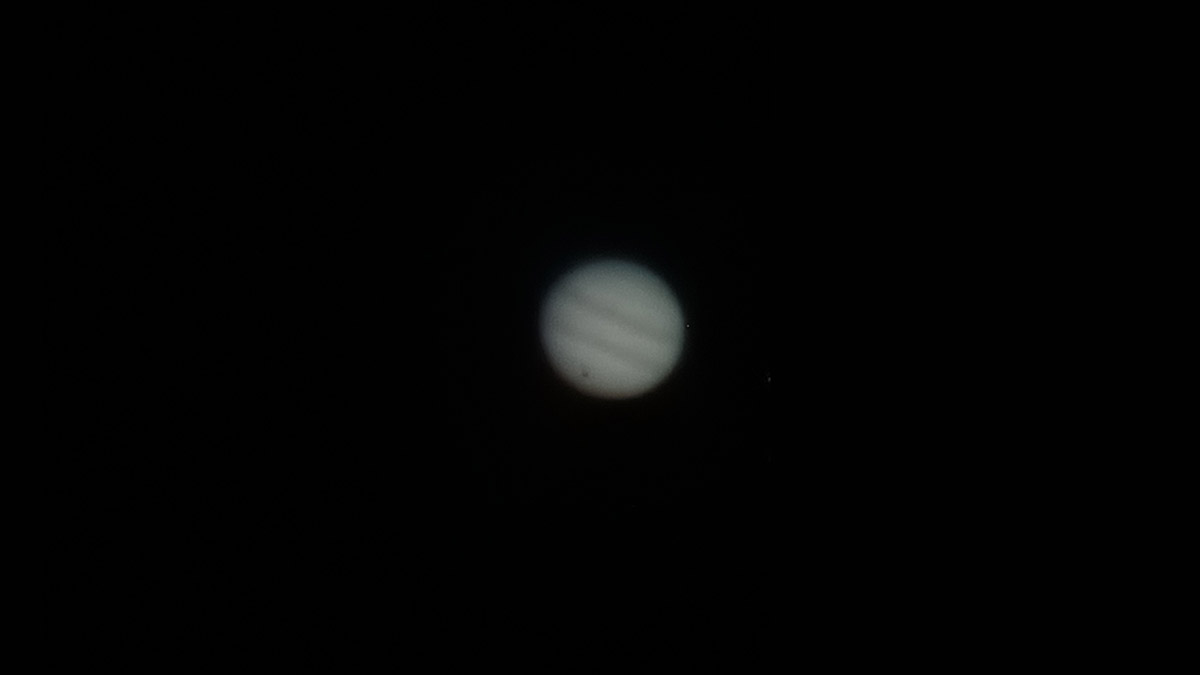
Image credit: JM/TRAC
Above image: This photo of Ganymede's shadow was taken at 19:33 on 25 Feb 2025. Europa is positioned above the shadow but couldn't be seen. Io can just be made out to the east of Jupiter.
This Ganymede shadow transit appeared very clearly through the telescope at a high magnification (150x) and repeated what we saw on 20 Jan 2025.
Europa Shadow Transit
25 Feb 2025: After the Ganymede shadow transit, Europa's shadow also transited Jupiter, but we were not able to spot it with the telescope.
The shadow is difficult to see since Europa is the smallest of the Galilean moons. We had better luck on 10 Jan 2025, when Europa's shadow was spotted using the zoom eyepiece.
Titan Shadow Transits
No attempts were made to observe a Titan shadow transit of Saturn due to the poor weather and the low position of Saturn after sunset.
Planets
The planetary parade did not disappoint. Some of us were lucky enough to spot six planets this month! Only Neptune eluded us.
Mercury
The tiny planet Mercury was spotted hanging low in the south-western sky after sunset at the end of the month.
Most people have never seen Mercury, but it's easy when you know where to look! TRAC team members caught a glimpse of the elusive planet on 27 and 28 Feb 2025.
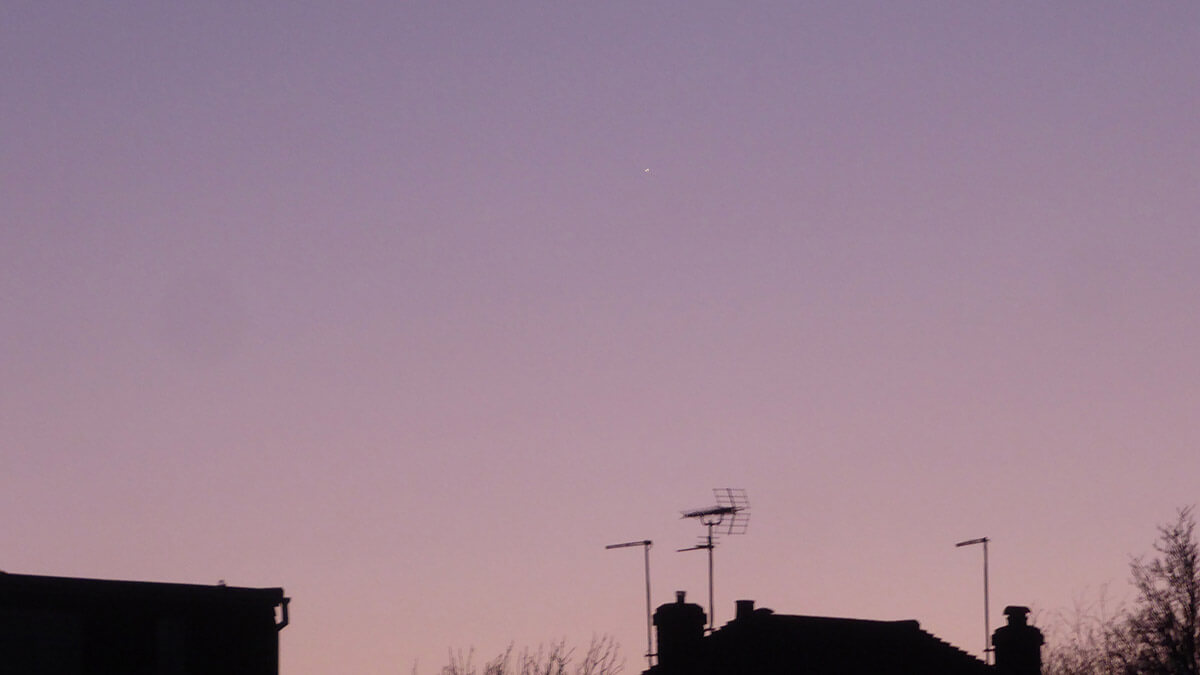
Image credit: JM/TRAC
Above image: Mercury (mag. -1.0) was seen at 18:05 on 27 Feb 2025. It's the faint yellowish dot above the TV aerials in the centre of the photo.
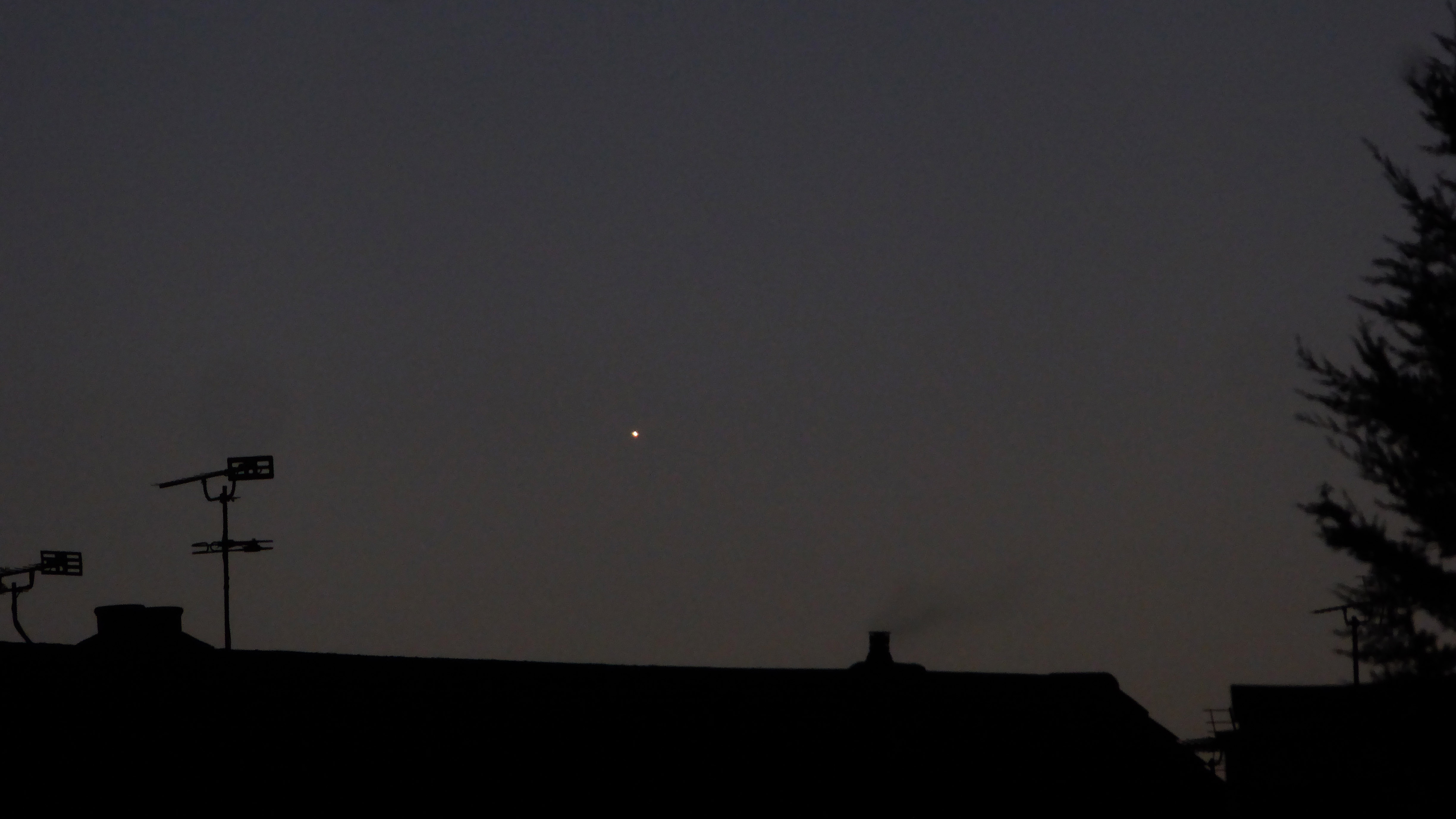
Image credit: JM/TRAC
Above image: Mercury (mag. -1.0) was easily seen with the naked eye at 18:25 on 28 Feb 2025. The view to the south-west was perfect!
Venus
The phase of Venus is now easy to see using ordinary binoculars.
We saw the planet's phase (37%) in the telescope on 01 Feb 2025. Venus was difficult to photograph after the sky got dark, but the view in the telescope was not too badly affected.
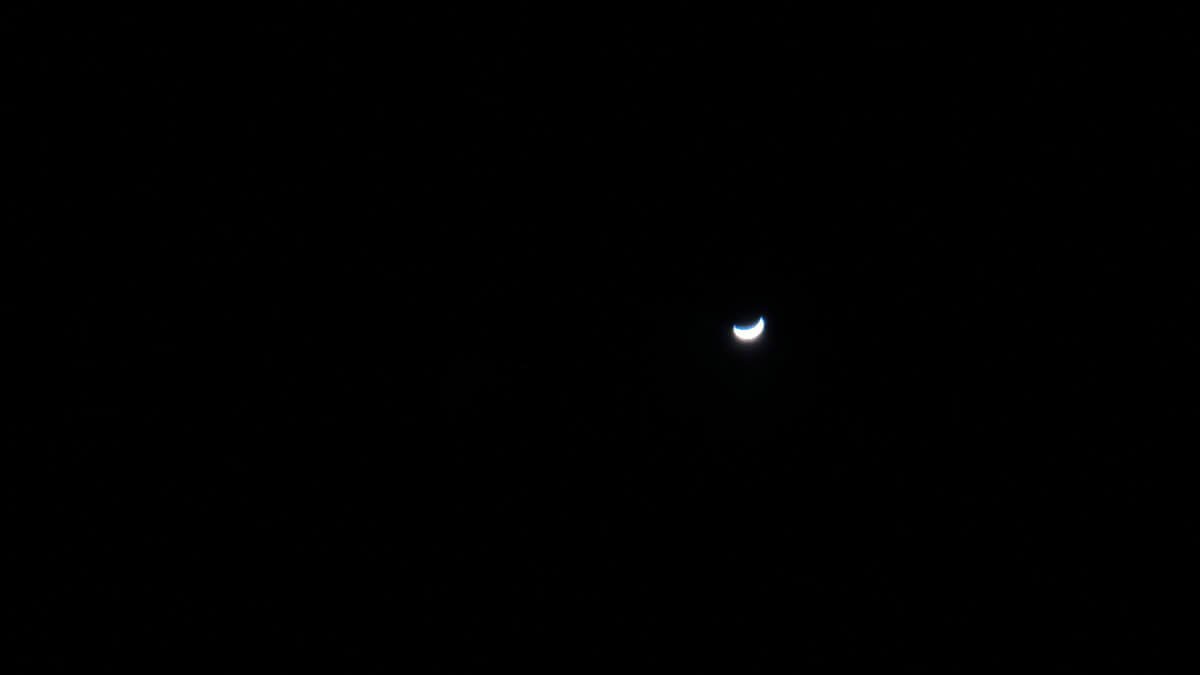
Image credit: JM/TRAC
Above image: Venus (mag. -4.5) appeared as a crescent (like the Moon) at 19:30 on 24 Feb 2025. The planet was 19% illuminated.
TRAC can report that we did not detect any sign of the "Ashen Light" effect!
Mars
We didn't get any decent chances to see Mars this month due to the poor seeing conditions.
Take a look back at our Jan 2025 Monthly Report for images we took of the Martian surface, including the planet's northern polar ice cap and dark markings.
Jupiter
Our main observations of Jupiter and its moons took place during the Jovian moon shadow transit events on various nights.
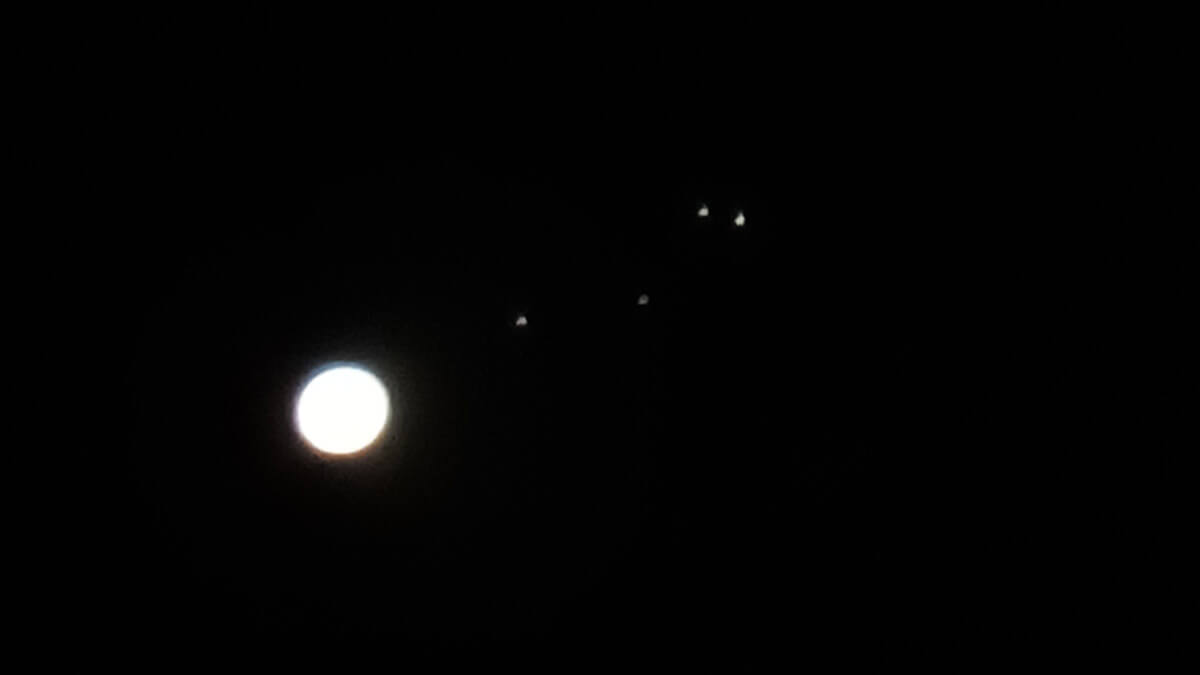
Image credit: JM/TRAC
Above image: Using the telescope, it was possible to see Jupiter's four large moons in this alignment on the planet's western side at 19:10 on 24 Feb 2025.
Saturn
We got a surprisingly good view of the ringed planet from the park on 01 Feb 2025. Towards the end of the month, Saturn was too close to the Sun to be seen after sunset.
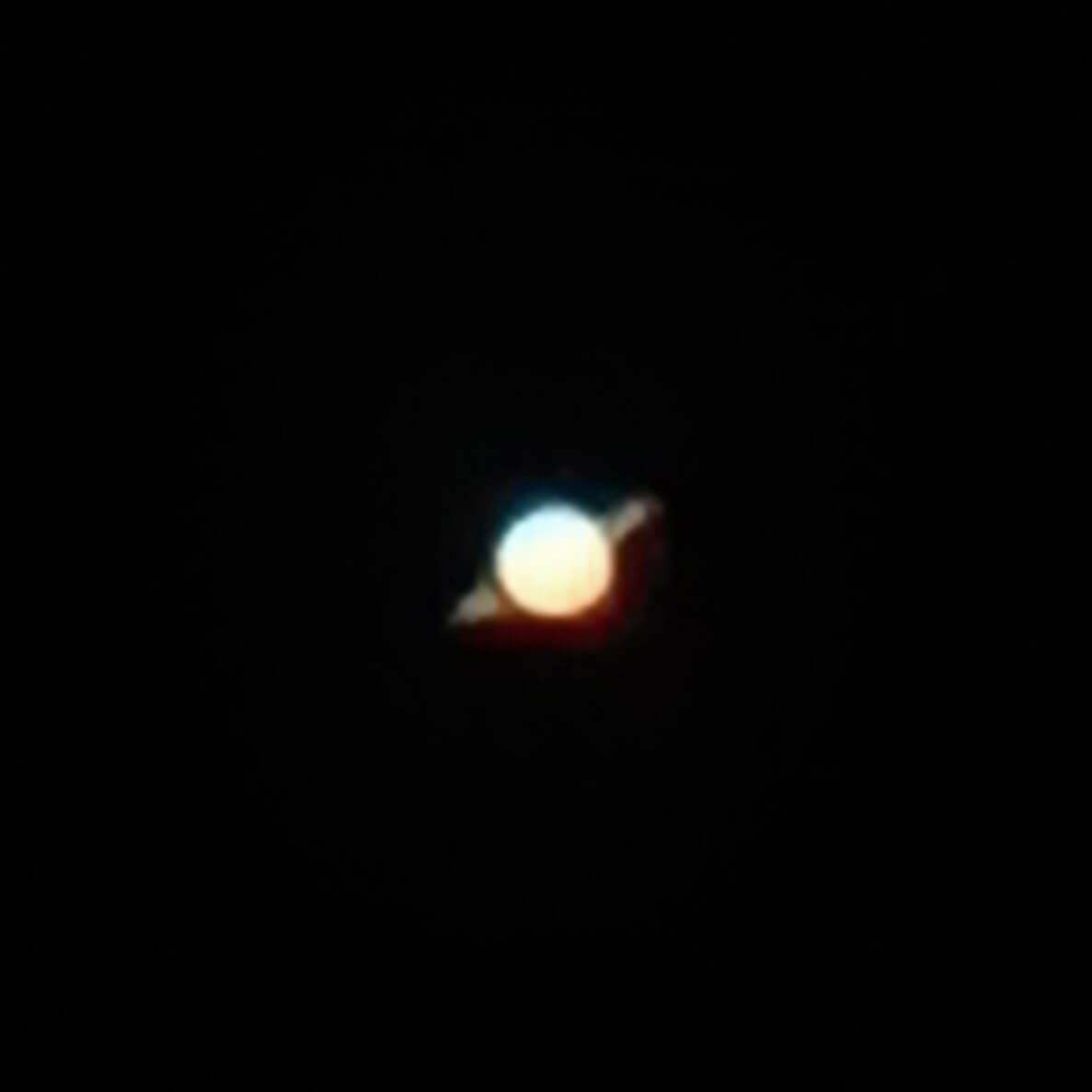
Image credit: MK/TRAC
Above image: Saturn (mag. +1.1) and its rings, as seen at 18:00 on 01 Feb 2025.
Uranus
Uranus was spotted in binoculars. No attempts were made to locate it with the telescope due to poor weather conditions. But TRAC operatives in Europe did manage to pick up Uranus in a photo.
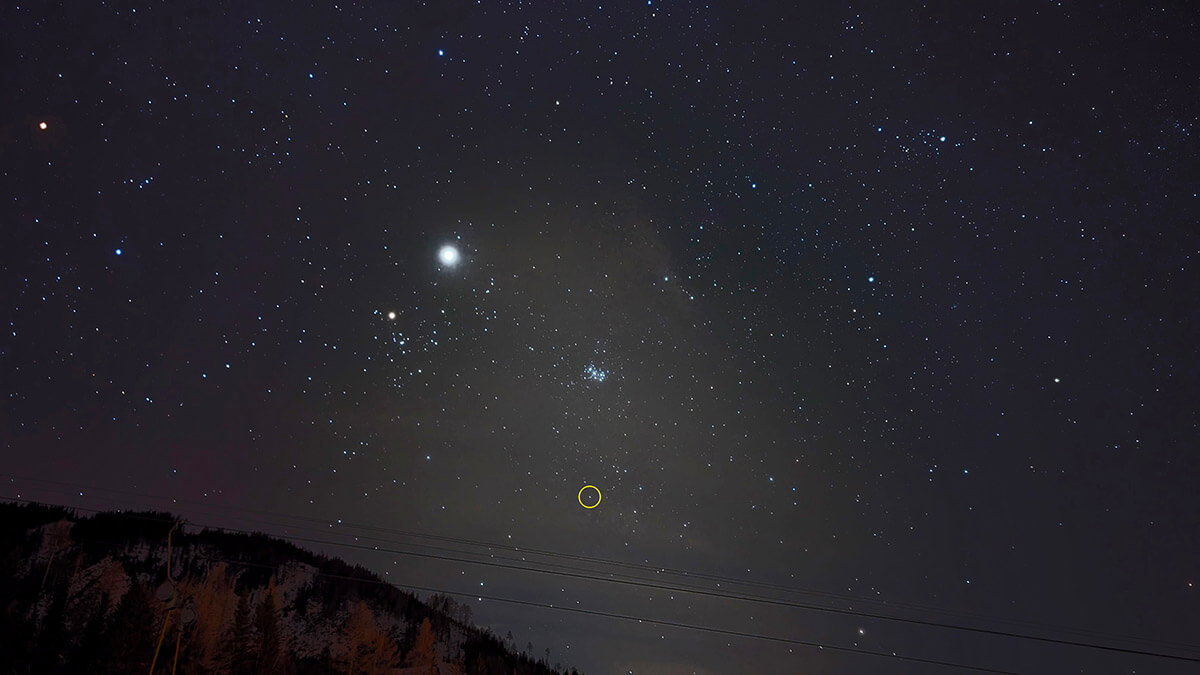
Image credit: MK/TRAC
Above image: From high in the Austrian Alps, Matey captured this photo showing Uranus below the Pleiades and Jupiter. Uranus is circled in yellow.
Neptune
No attempts were made to see Neptune.
Astrophotography
What We Learnt
- It's possible for us to achieve excellent photos from locations with low levels of light pollution.
- The Google Pixel 8 has an excellent astrophotography mode.
- We stand a decent chance of getting our photos published in online media.
- Tripods are strong, but they're not indestructible.
Telescope Maintenance
Cleaning Eyepieces
Every eyepiece was carefully cleaned at the start of the month. The star diagonal was also cleaned because a lot of dirt and dust had accumulated over the past four months!
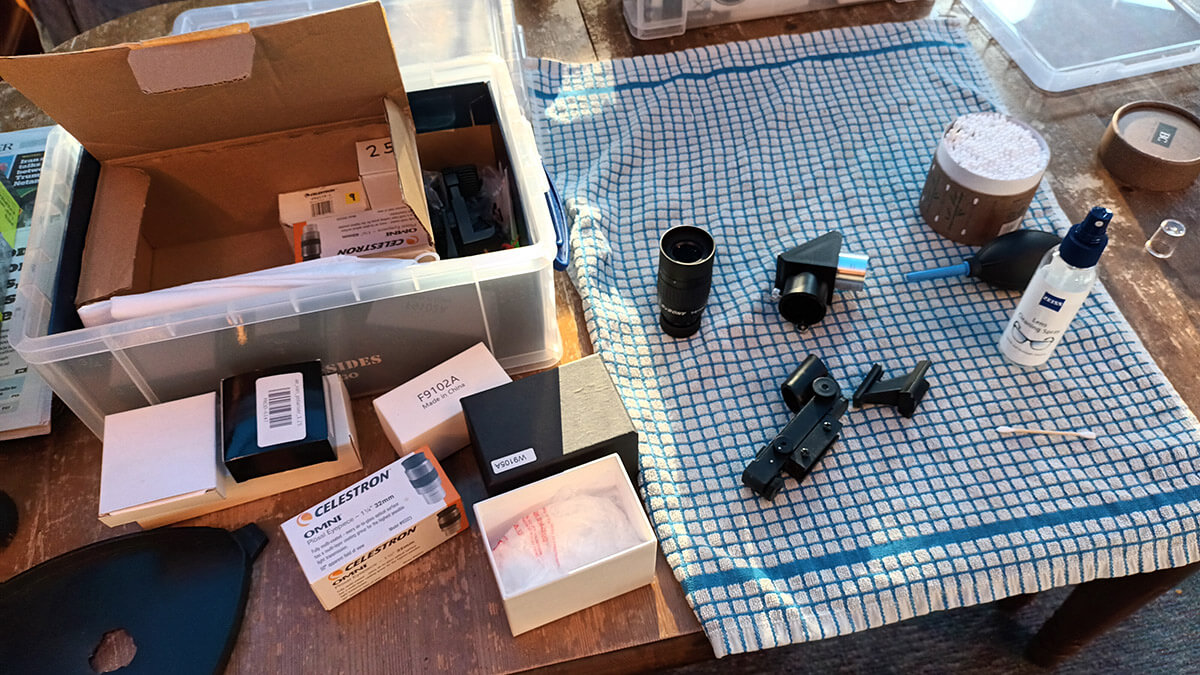
Image credit: JM/TRAC
Finderscope Fixed
The finderscope was taken apart, readjusted, put back together, and recalibrated. The accuracy should now be a bit better.

Image credit: JM/TRAC
Mars at Rochester Cathedral
TRAC Sees Mars by Day and by Night
A couple of astronomy club members visited the Mars art installation at Rochester Cathedral this month.
They reported that it was interesting to see the unusual sight of a large model of Mars hanging from the ceiling of the cathedral, but they were not exactly sure what they were looking at because there wasn't much information available explaining the geographic features on the Martian surface.
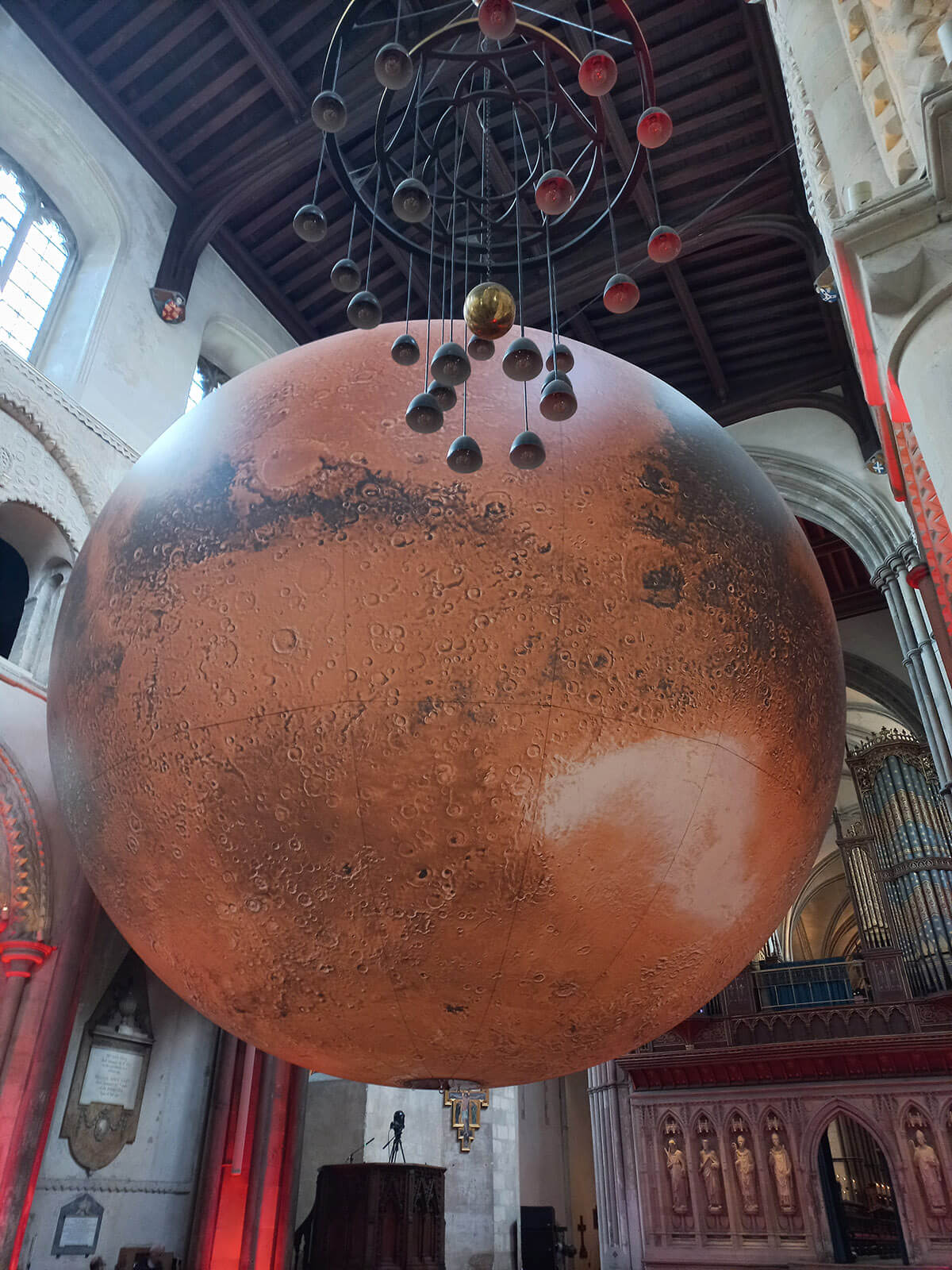
Image credit: DM/TRAC
Summary
Bad Weather, Good Results
Despite the awful weather, we managed to see a lot in February 2025. For me, the highlight was the stunning sight of the Moon–Venus–Saturn Conjunction at the start of the month.
It was also an excellent month for our astrophotography. I was really impressed with the images that Matey and Krum sent back from Austria. Well done to them both for putting in the effort that's required to get such great results!
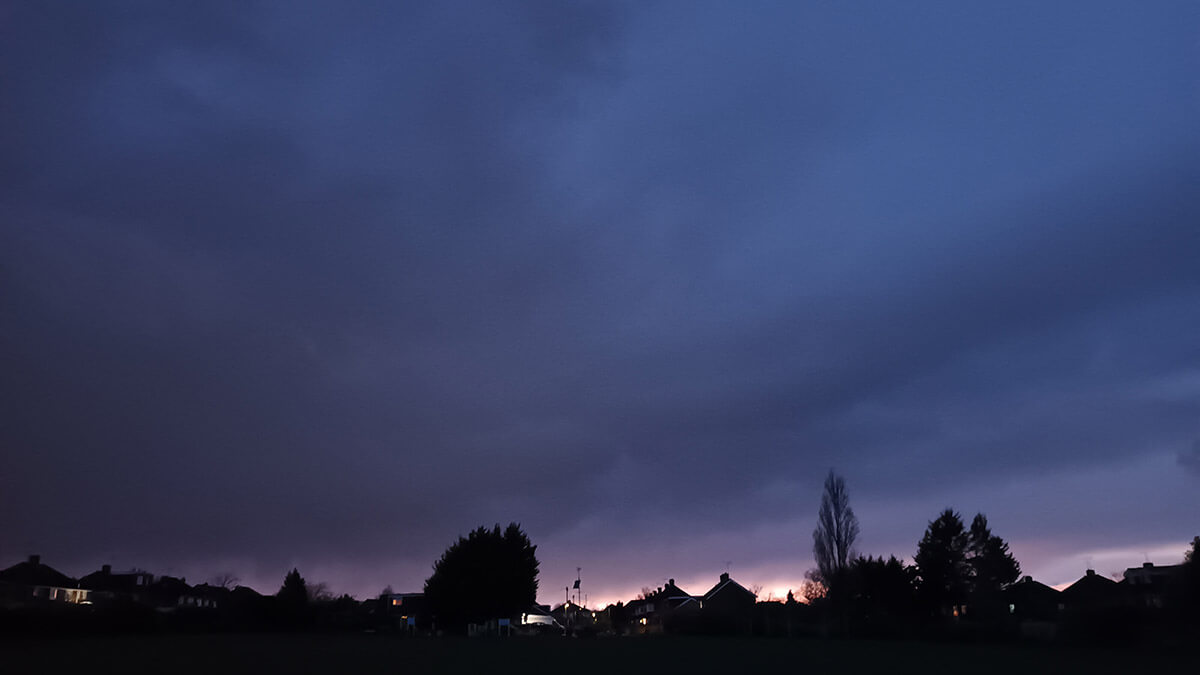
Image credit: JM/TRAC
Above image: A typical view of the sky above from Rainham, Kent, during February 2025.
Signs of Spring
The spring constellations are now high above us after midnight. We'll take a look at those over the next few months.
James M
TRAC Team Leader
03 Mar 2025 – Rainham, Kent

TRAC is an amateur astronomy group based in Rainham (Kent) in the United Kingdom.
On clear nights, you'll find us outside, observing stars, planets, moons, galaxies, satellites, meteors, and comets.
This monthly report is intended to keep club members informed of our observational activities, track progress towards the club's long-term goals, celebrate successes, and record memorable moments.
Unless stated otherwise, all magnitude values refer to apparent magnitude and have usually been rounded to one decimal place.
We welcome any questions, feedback, or suggestions you may have. Please let us know if anything is unclear or if you notice an error, inaccuracy, or typo. Contact us via email.
© 2025 Taverners Road Astronomy Club